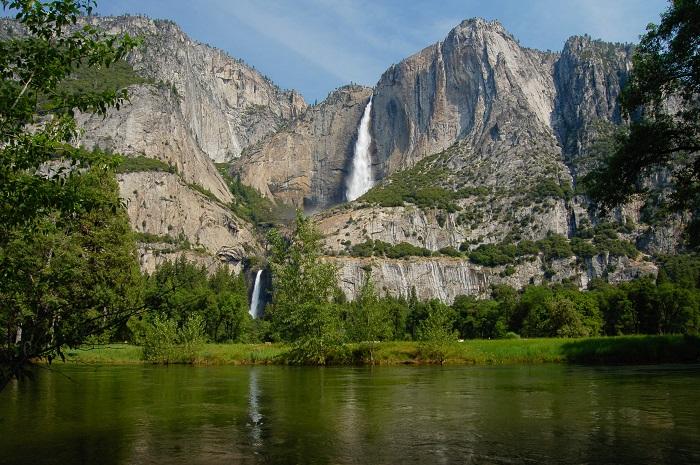An atmospheric river of moisture took aim on California and the High Sierra over the last few months, dumping snowfall in amounts that haven’t been seen in years. While the state’s multi-year drought isn’t entirely over, the Pineapple Express (as the storms raging in over the Pacific Ocean from Hawaii are referred to) has been hammering California with rain and snow.
While one storm that drenched Yosemite National Park in January led to some minor flooding in the Yosemite Valley, higher up near the roof of the park the snowpack was building, and building, and building. And that has excitement swelling right along with the Merced River.
What’s going to happen this spring and summer? Well, all of that snow is going to melt with warmer weather and make for great waterfall watching within the park from May through the middle of summer. And there are thousands of waterfalls, from tiny streams to towering spectacles.
Yosemite National Park has countless waterfalls, some small, some iconic, and some huge. The most notable of these is Yosemite Falls, which drops 2,425 feet from the top of the Upper Fall to the bottom of the Lower Fall. The valley’s native people, the Ahwahneechee, called this incredible waterfall Cholock, and believed the pool at the base was the home to spirits and witches. For an easy walk that gives you incredible views of these falls, take the one-mile loop trail to the waterfall’s base, and listen to the thundering water and let the spray wash over you. It’s a spectacular sight, and will be full bore this spring. You can hike to the top of the falls, but it’s over seven miles of steep trail, with an elevation gain of 2,700 feet.
On the south side of the valley, Sentinel Falls drops around 2,000 feet, cascading from ledge to ledge to ledge, with peak flows in May. And there are others: Ribbon Falls at 1,612 feet, Horsetail Fall at 1,000 feet, and Bridalveil Fall, which drops 620 feet and is the one that greets visitors from the Wawona Road. There’s an easy halfmile trail to its base.
For a treat on a hot day, head a mile up the Mist Trail to Vernal Fall (317 feet) and on another 2 miles towards Nevada Falls (594 feet). But take a raincoat and good boots; you will get wet, which is a nice way to cool off. Spend time at the brink of both of these falls for a great view down the valley, but watch your step, and never enter the water above a fall. Peak flows are in late May, and hikers can continue up this trail to Half Dome, with a proper permit.

Yosemite Falls in the park’s iconic valley will be roaring this spring thanks to the winter’s prodigious snowpack/NPS, Damon Joyce
For a great perspective of the valley’s waterfalls, trek to Glacier Point. From there you’ll be able to marvel at Nevada and Vernal falls, as well as Yosemite Falls. If you decide to hike up to Glacier Point, and trail conditions allow it, watch for Illilouette Fall, which usually is running at peak flows in late May.
While the Yosemite Valley is the most often visited part of the park, there are plenty of falls in the Hetch Hetchy area to the north. Wapama Falls drops 1,400 feet, and sometimes covers the footbridge at its base. It’s a five-mile hike, round trip, to see these falls, but it’s one of the quieter parts of the park. A longer hike will take you to Rancheria Falls.
In the Wawona area, Chilnualna Falls drops about 2,200 feet, and it’s a strenuous 8-mile hike, round-trip, with a 2,400-foot climb.
A visit to Yosemite this spring, especially, will be a dramatic show of stone and water. The high passes will be slow to open with the deep snows, and May crowds aren’t nearly as intense as those later in the summer will be. There’s plenty of lodging available for a base camp, such as the lodges, cabins, hotels, and vacation rentals, such as the more than 100 properties offered by Yosemite’s Scenic Wonders at Yosemite, Wawona, or Oakhurst/Bass Lake area.
For the adventurous, head out to some of the lesser-known waterfalls, such as Lehamite, Quaking Aspen, Royal Arch Cascade, and Wildcat Falls. Or take a one-day tour of the valley’s waterfalls from the road. Either way, watch nature at its noisiest and most powerful at these amazing falls this spring. It will be nothing short of astounding.





